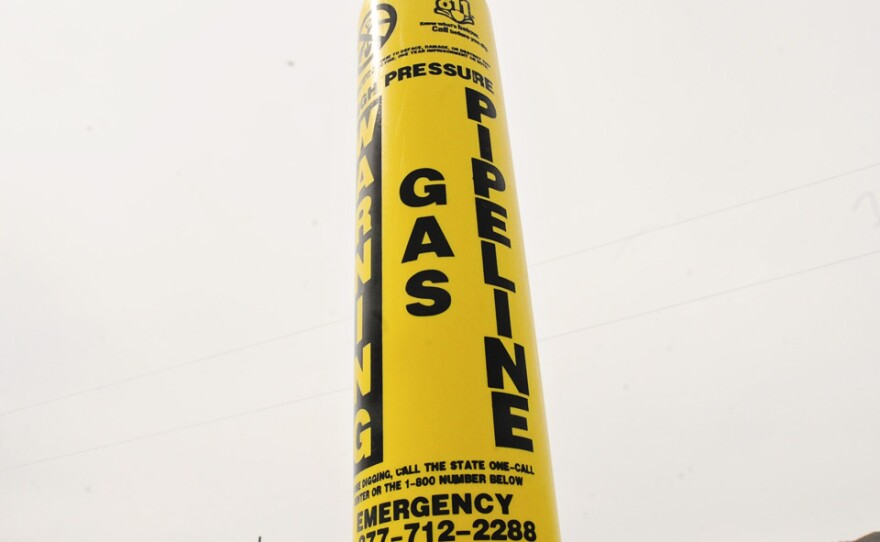A new environmental review is underway to assess the long-term impacts of the Ruby Pipeline. Last year, a federal appeals court ruled the government’s original environmental appraisal of the project was inadequate. UPR’s Matt Jensen has the story.

You can still see the scars left over from construction of the Ruby Pipeline – a 678-mile-long pipe that caries natural gas from Wyoming through Utah and Nevada to Southern Oregon. The utility has been in service for nearly two years but the debate over its impact to the environment trudges on. Conservation groups have argued the Bureau of Land Management, or BLM, erred in approving the project and say the U.S. Fish and Wildlife Service’s expert assessment on building the line failed to fully consider a number of endangered fish species in the pipeline’s path. In October of last year, the US Court of Appeals for the Ninth Circuit agreed in part with the challenge, and ordered BLM and the Fish and Wildlife Service, or FWS, to take a closer look at the project’s footprint.
Amy Atwood is a Portland-based attorney for the Center for Biological Diversity who helped litigate the case.
“Ultimately prevailing in this case as we did, it did set an important precedent," she said. "The legal opinion that was issued maybe isn’t going to stop Ruby Pipeline, but it will – or should - prevent the same things from occurring in other cases that occurred here.”
Construction crews cleared nearly 9,220 acres of sagebrush steppe habitat and crossed 209 rivers and streams to build the pipeline. In its initial assessment, the FWS indicated the project could adversely affect nine endangered fish species and jeopardize critical habitat. But the agency went ahead and concluded construction wouldn’t threaten the species or change their habitat. The court, however, called those findings “arbitrary and capricious,” and told BLM it couldn’t use the "biological opinion" to authorize construction, according to court documents.
“What they were required to do was to basically summarize the degradation that has occurred so far and provide an overview of other impacts to the same affected resource that will occur, or are occurring in connection with Ruby," Atwood added. "They didn’t do that, and so the court remanded the matter to BLM and directed them to prepare a Supplemental Environmental Impact Statement and said, ‘essentially even if the pipeline is now already fully constructed and in operation, it’s still possible for you to identify and catalog the cumulative impacts and record them so that when the next pipeline proposal comes along, that they have a better record of everything that’s occurred so far and can decide at that point if the additional impact makes sense.”
BLM managers, however, say the environmental study was extensive and that the right decision was made in approving the Ruby Pipeline.
“Our agencies did not take this project lightly," said BLM project manager Mark Mackiewicz. "We did a thorough vetting of the impacts and felt that it was the right decision. And we’re quite pleased with the amount of mitigation that was implemented as a result of this project and overall felt the assessment was good.”
Mackiewicz says conservation efforts by Ruby to restore sage grouse habitat after the pipeline was constructed actually do more for the endangered birds than if the pipeline hadn’t been built at all.
“I will make this bold statement that in all reality, the sage grouse actually benefited from this project because so much work was done and so much effort was put into improving sage grouse habitat in those four states," he said.
The BLM manager goes on to say reclamation work along the easement is progressing but weather patterns have slowed plant growth.
“Reclamation at this point is looking pretty well in the Cache County area but that area is mostly mountainous area isn’t composed of sagebrush habitat. As we move further west into Box Elder County and into Nevada, it’s been a little problematic on getting our reclamation to what we would want it because of the moisture situation this year and last winter.”
Atwood, who’s also working on litigation involving the hotly debated Keystone XL pipeline, says she hopes the lessons learned from Ruby will get the nation looking more closely at fossil fuel infrastructure.
“At their core, all of these decisions really present the question of whether the costs of development or extraction are worth the benefits," she added. "In that cost benefit analysis even, we don’t think that these kinds of projects pencil out any more – not for their direct impacts; not for the extraction issues, whether you’re talking about fracking or mining. Not for the pollution; not for the construction; not for the operation; and not for the emissions into the atmosphere which are now jeopardizing the future of life on earth.”
The public will be able to comment on the BLM’s website at http://www.blm.gov/nv/st/en.html in the coming weeks. For Utah Public Radio, I’m Matt Jensen.
--- email: matthew.jensen@usu.edu








